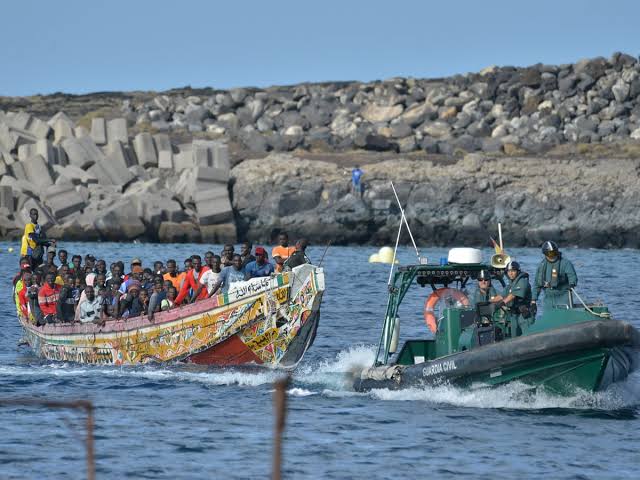
Europe-bound African migrants rescued by Spanish authority
On Monday, emergency responders rescued 136 African migrants bound for Europe from a boat off the coast of El Hierro, one of the Canary Islands. El Hierro, the smallest and southernmost of the Canary Islands, is situated in the Atlantic Ocean near Africa’s coast.
The migrants were brought to La Restinga port in Spain aboard a vessel from the Spanish sea search and rescue agency. This incident occurs as Spain’s Prime Minister Pedro Sanchez embarks on a three-day visit to West Africa starting Tuesday, amid a significant increase in migrant arrivals.
Spain’s coastguard is frequently involved in rescuing boats carrying African migrants en route to the Canary Islands, and the local government has called for increased assistance. Sanchez’s visit will include stops in Mauritania, The Gambia, and Senegal—key countries involved in the migration issue.
It is unclear what measures or incentives Sanchez might propose, particularly to Mauritania, which is a major departure point for migrants and which he last visited six months ago. Madrid estimates that approximately 200,000 people in Mauritania are waiting to migrate to the Canaries.
Fernando Clavijo, the regional leader of the Canary Islands, who met with Sanchez on Friday, has urged the European Union to increase support so that the Canary Islands do not bear the full burden of Europe’s migration challenges. Clavijo emphasized that the migration pressure affects Spain and Europe more broadly, as many migrants continue on to France and other European countries.
Between January 1 and August 15 of this year, the Canary Islands received 22,304 migrants, a 126 percent increase compared to 9,864 during the same period in 2023, according to Spain’s interior ministry. Overall, Spain saw 31,155 migrant arrivals by mid-August, marking a 66.2 percent increase from the 18,745 reported the previous year.
As autumn approaches and weather conditions improve for Atlantic navigation, migration numbers are expected to rise. Last year saw a record 39,910 arrivals, and current trends suggest that 2024 may surpass this number, reinforcing the Atlantic route to the Canaries as a major migration path despite its hazards.
The perilous Atlantic route is known for its strong currents and frequent tragedies involving overloaded and often unseaworthy vessels. Additionally, the Spanish enclave of Ceuta has also seen a sharp increase in arrivals in recent weeks, highlighting the broader impact of the migration surge across Spain.




